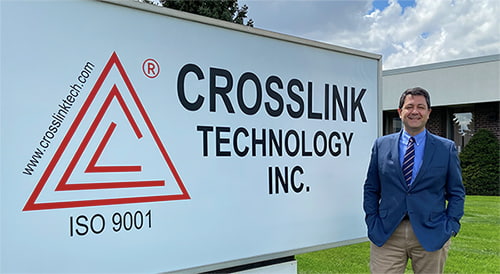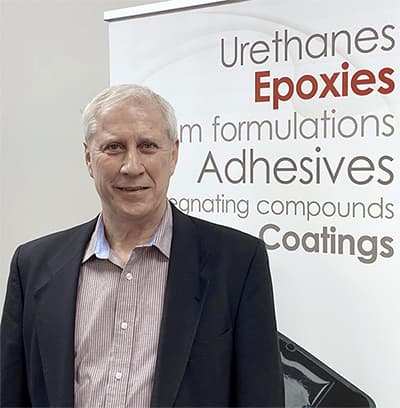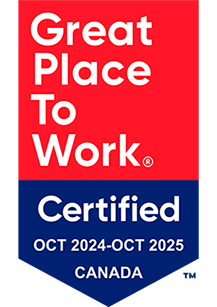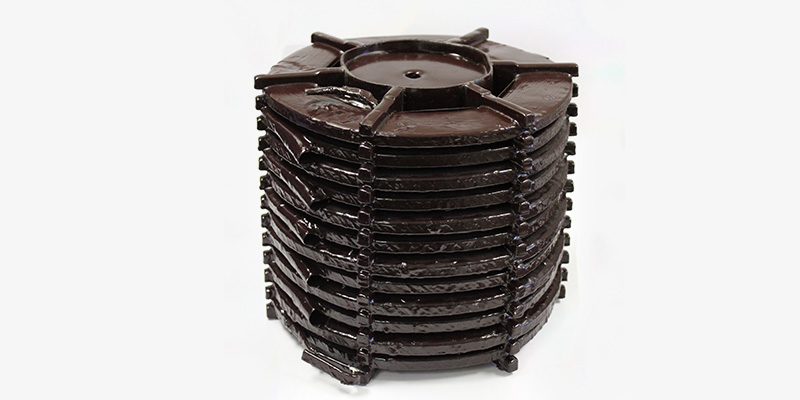Because we are formulators, we understand the chemistry intimately and know how it could be applied to the bushing. This is what makes us unique.
John Ulcar: This was a part of our succession plan. We have a very aggressive growth plan, and I knew that I wasn’t going to be around forever. So, for the continuity of the business and for our customers, we wanted to make sure we had a proper succession plan going forward. Once we found assets, the passing of the baton was very easy. Edson is very talented and skillful. He understands the industry, our customers’ needs and how we meet them.
Edson Fariello: It started a few months before I joined the company. I had little knowledge back then. It was an incredible surprise when I started talking not only to John, but also to the board. John put together a board for the company to look into the future, and here we are, celebrating our 40th anniversary this year.
I have been very blessed in joining such an incredible organization with such incredible people.
Edson Fariello: It is both. I have a degree in chemical engineering, but I also went to business school. Before receiving my MBA, I worked in process engineering, quality control and production. Then the sales bug got me, and I got involved in sales and marketing for quite some time.
John Ulcar: I was always a formulator. The first job I had when I graduated from university was as formulator, particularly in urethanes and urethane foams. My business partner at the time, Karl Egenberger, was an electrical engineer. He noticed there was a great demand for customization for various products. The large players in the market would provide standard products like product cards, but there was very little innovation at the time with the existing suppliers.
We founded a company in 1981, starting as formulators for the electrical and electronic industry and for large companies like Westinghouse, General Electric and Ferranti-Packard. After about two years, we were successful at casting their transformers, particularly the potential transformers (PTs) and current transformers (CTs). The engineers at that time, particularly at Westinghouse, were asking us to formulate products that they could keep in service for 60+ years. That was an important part of their business model, to provide longevity to the electrical grid. We accelerated testing to provide the required properties, and we did it quite successfully.
One day, we had a meeting at Westinghouse when a mechanical engineer came to us with an idea. He worked in the bushings department, where, due to the company size and red tape, it would take them between six and nine months to produce either a prototype or samples. Since we knew epoxies, he asked us to cast some bushings for them.
In well over 30 years, we have not had a reported leakage in the field.
 At that time, we had been supplying materials for bushings, but we had never cast one. In about three weeks, we had a mold, cast the bushings and completed the full thermal cycle testing, -40°C to +140°C. Within three weeks, we took three samples to that mechanical engineer. He was so impressed that he asked for twelve more, which became 100 more, which became 1,000 more.
At that time, we had been supplying materials for bushings, but we had never cast one. In about three weeks, we had a mold, cast the bushings and completed the full thermal cycle testing, -40°C to +140°C. Within three weeks, we took three samples to that mechanical engineer. He was so impressed that he asked for twelve more, which became 100 more, which became 1,000 more.
We were selling material for both PT and CT bushings to several other electrical manufacturers, such as Ferranti-Packard, now Siemens, and we noticed a trend: these companies knew how to do casting, but they had issues with casting bushings. The biggest issue was being able to handle the cantilever load and not have a leak. There is an interface between the epoxy and the conductor. We came up with a very proprietary method of castings bushings and in well over 30 years, we have not had a reported leakage in the field. According to some reports, other bushings manufacturers have 5-10% leakage, so our record is really good.
One of the things that fascinate me the most about Crosslink is your ability to meet a customer. How do you approach the customer to provide that customized solution?
Edson Fariello: One of the first things that John taught me when I started with Crosslink Technology was that sometimes you have a transformer worth half a million dollars waiting somewhere for a couple of bushings. The owners cannot ship it and the transformer cannot, in turn, serve their customers. One of the things that we at Crosslink try to do every day is be really fast. We deal with very short lead times, much shorter than what you would expect from a cast component manufacturer. We are also vertically integrated. On one side of our plant, we make the liquid epoxy that will be used to cast the bushing in the other part of the plant, which helps a lot.
One of the things that we at Crosslink try to do every day is be really fast.
John Ulcar: They bring us in at the design stage. Let me go back one step. It is interesting that we can have several customers supplying the same end user, each with different requirements for a certain type of bushings. Every single customer is unique despite the fact that we are all in the same industry. In some cases, it could be that the end properties are similar, but the manufacturing and processing requirements are different. Our customization is to the specific customer, which meets the requirements of the end user.
 John Ulcar: There are two components of that process. What I think makes us unique is that because we are formulators, we understand the chemistry intimately and we know how it could be applied to the bushing.
John Ulcar: There are two components of that process. What I think makes us unique is that because we are formulators, we understand the chemistry intimately and we know how it could be applied to the bushing.
The second part is our electrical engineering. We partner with the electrical engineers of the customer companies, and quite often they are dealing with space constraints. There is partial discharge, and a number of other electrical properties that have to be accounted for. In some cases, the design can be done by both the customer engineers and our engineers.
And then there is the chemical part of it. In some cases we design the epoxy to meet the processing requirements; in other, there are mechanical requirements. They have a high cantilever requirement because of the cables that are being attached to it, as well as extreme thermal cycling or extreme temperatures. We balance the mechanical properties and the chemical properties of the epoxy with the design itself. That is where I think we marry the two together very neatly.
At Crosslink, we have over 1,500 proprietary formulations. Companies not only get us involved in the design of the bushings, but also with the challenges with the supply chain.
Edson Fariello: I think it is a daily endeavor, Alan. As John was saying, and I myself have seen, we not only have companies getting us involved in the design of the bushings, but also with the challenges with the supply chain. We have over 1,500 proprietary formulations. It is very rarely that we have to start from scratch on any resin, particularly the ones that we use for bushings. We are making more investments this year on the technology required to make bushings and to improve our manufacture of the resins. This is an ongoing process that will continue over the next five to ten years. It is the way to go for every company that wants to maintain the speed of delivery and be able to customize the solutions to their customers.
Here is a hard question. We have moved into a situation where purchasing always wants the cheapest price, engineering wants the product that meets specifications and works, and a CFO wants the lowest total cost of ownership. There are three different things, and that is the reality of the customer market we live in. As the market changes, it is going to impact everyone. Where is Crosslink going to fit that niche, and what you are going to focus on as a company the most?
Our future efforts are focused on decreasing partial discharge as well as developing a system that will ensure the bushings have self-cleaning properties, approaching those of porcelain.
John Ulcar: Right now, we are focusing on two new developments within the bushing industry. One is to decrease the partial discharge in the electrical and increase some of the electrical properties within the epoxies themselves.
We have a program in place to start developing products with improved properties that will increase their longevity in the field.
A property we are focusing on the most is decreasing partial discharge. Our goal is to get to zero, that is the brass ring. We are making significant improvements in that part of the business. Secondly, we are looking at mimicking porcelain from the point of view of self-cleaning out in the field, especially in polluted areas. As is commonly known, porcelain is not the easiest product to work with. It is brittle, and it has other issues, but it does have great outdoor self-cleaning properties. With epoxy, we are providing a product that is much more stable from a mechanical point of view. Even if some hunters want to shoot at it as practice, it will not be destroyed in the field. At the same time, we are developing a system that will ensure the bushings have self-cleaning properties, approaching those of porcelain.
I would like to congratulate Crosslink on 40 years of excellence. Thank you for being that kind of a privately held company in this massive industry that is providing value and a lower, total cost of ownership, and passing on the legacy to the next generation.








